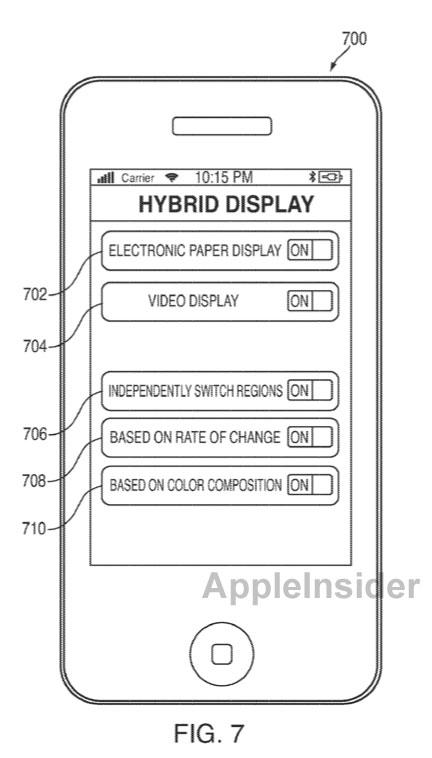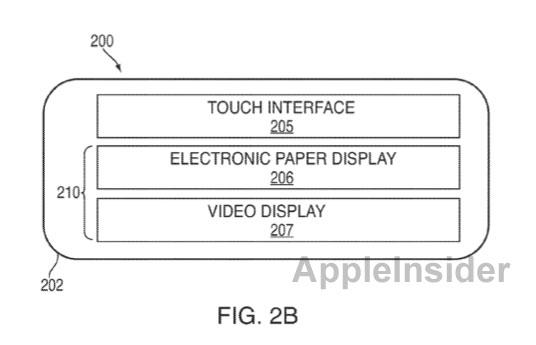Apple exploring hybrid e-ink-LCD displays with independent regions
The new dynamic, hybrid system described by Apple could have sections of the screen operate as a traditional LCD screen for displaying video, while other parts with static content would be served up in e-ink. Rather than depending on the user to switch between e-ink and LCD, Apple's system would handle the work and provide content in the ideal context.
Apple's interest in the technology was revealed this week in a new patent application filed with the U.S. Patent and Trademark Office, and first discovered by AppleInsider. The filing, entitled "Systems and Methods for Switching Between an Electronic Paper Display and a Video Display," describes hardware that can selectively switch between the two types of screens.
E-ink displays, or "electronic paper" as Apple refers to it throughout the filing, are advantageous because they do not require a backlight to operate, and they can be read more easily in direct sunlight. E-reader devices focused on delivering books, like the Amazon Kindle, use e-ink displays.
Of course, Apple is also involved in the sale of digital books through its own iBookstore. The iBooks application is available for the iPad, iPhone and iPod touch, but it cannot be utilized on a device with an e-ink display.
Apple's patent application notes that display types on a device are typically based on an assumption about the visual content that will most often be displayed on the screen. An LCD or OLED display is ideal for high-resolution content with colors, while e-ink is ideal for static black-and-white content, like text.
The solution is to offer a screen with "multiple composite display regions," where content could be shown in both the "electronic paper" mode and "video display" format at the same time. Such a screen would also include independently activated backlights, illuminating panels when necessary.
Apple could accomplish this by having a translucent e-ink display that would be placed on top of the traditional LCD or OLED screen on an iPad. The top screen would allow users to see past it, so that video content in full color could be displayed on the screen below. And of course, atop all that would be a touch panel, allowing users to interact with the device.
The patent application, made public this week, was first filed by Apple in October of 2009. The proposed invention is credited to Gloria Lin and Andrew Hodge.
 Neil Hughes
Neil Hughes












 Mike Wuerthele
Mike Wuerthele

 Malcolm Owen
Malcolm Owen
 Chip Loder
Chip Loder

 William Gallagher
William Gallagher
 Christine McKee
Christine McKee
 Michael Stroup
Michael Stroup






